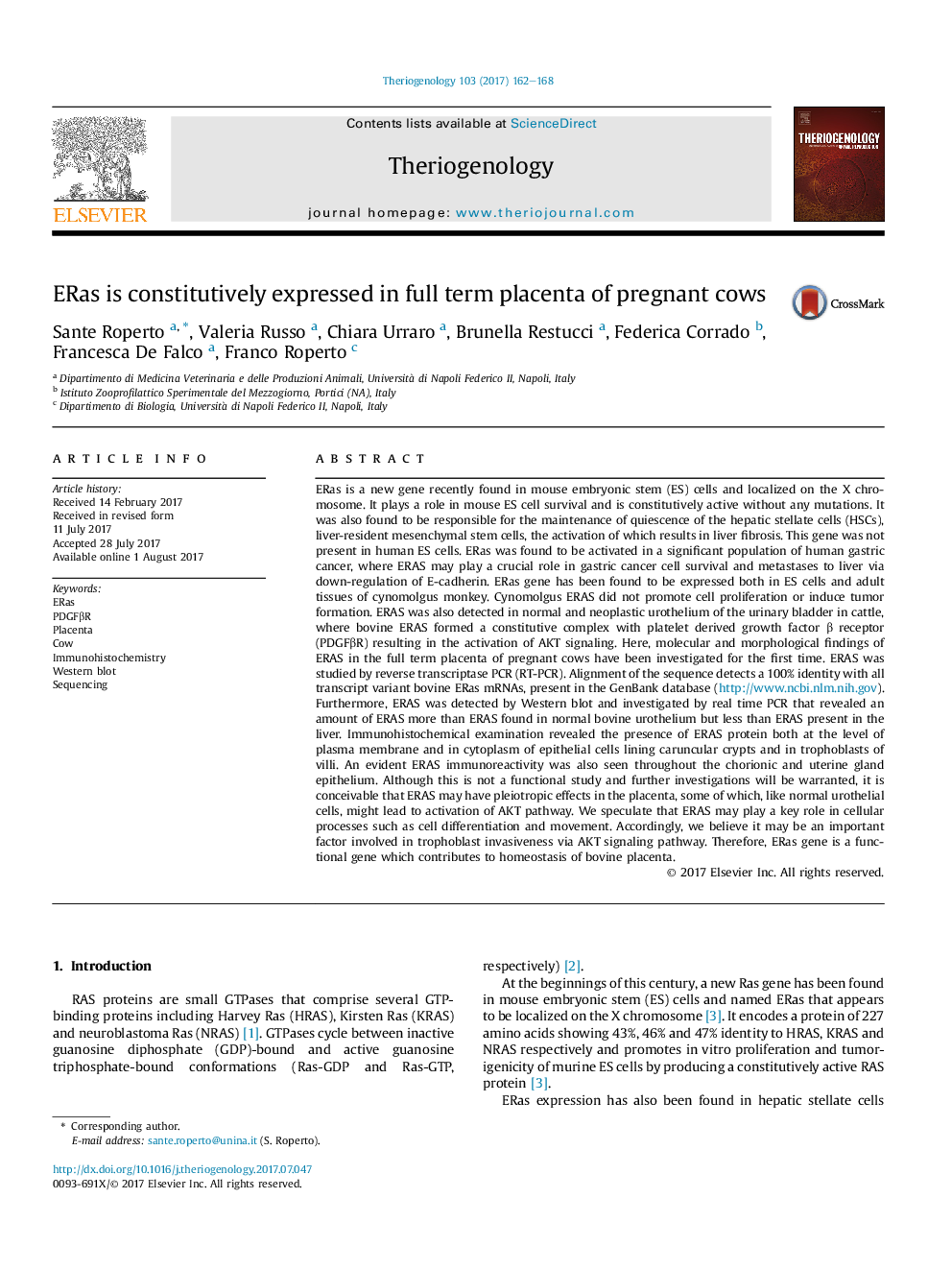| Article ID | Journal | Published Year | Pages | File Type |
|---|---|---|---|---|
| 5522918 | Theriogenology | 2017 | 7 Pages |
â¢This is the first study about ERAS expression in bovine placenta.â¢ERas gene is functional placental gene of cattle.â¢This study reports molecular findings of the constitutive ERAS protein.
ERas is a new gene recently found in mouse embryonic stem (ES) cells and localized on the X chromosome. It plays a role in mouse ES cell survival and is constitutively active without any mutations. It was also found to be responsible for the maintenance of quiescence of the hepatic stellate cells (HSCs), liver-resident mesenchymal stem cells, the activation of which results in liver fibrosis. This gene was not present in human ES cells. ERas was found to be activated in a significant population of human gastric cancer, where ERAS may play a crucial role in gastric cancer cell survival and metastases to liver via down-regulation of E-cadherin. ERas gene has been found to be expressed both in ES cells and adult tissues of cynomolgus monkey. Cynomolgus ERAS did not promote cell proliferation or induce tumor formation. ERAS was also detected in normal and neoplastic urothelium of the urinary bladder in cattle, where bovine ERAS formed a constitutive complex with platelet derived growth factor β receptor (PDGFβR) resulting in the activation of AKT signaling. Here, molecular and morphological findings of ERAS in the full term placenta of pregnant cows have been investigated for the first time. ERAS was studied by reverse transcriptase PCR (RT-PCR). Alignment of the sequence detects a 100% identity with all transcript variant bovine ERas mRNAs, present in the GenBank database (http://www.ncbi.nlm.nih.gov). Furthermore, ERAS was detected by Western blot and investigated by real time PCR that revealed an amount of ERAS more than ERAS found in normal bovine urothelium but less than ERAS present in the liver. Immunohistochemical examination revealed the presence of ERAS protein both at the level of plasma membrane and in cytoplasm of epithelial cells lining caruncular crypts and in trophoblasts of villi. An evident ERAS immunoreactivity was also seen throughout the chorionic and uterine gland epithelium. Although this is not a functional study and further investigations will be warranted, it is conceivable that ERAS may have pleiotropic effects in the placenta, some of which, like normal urothelial cells, might lead to activation of AKT pathway. We speculate that ERAS may play a key role in cellular processes such as cell differentiation and movement. Accordingly, we believe it may be an important factor involved in trophoblast invasiveness via AKT signaling pathway. Therefore, ERas gene is a functional gene which contributes to homeostasis of bovine placenta.
